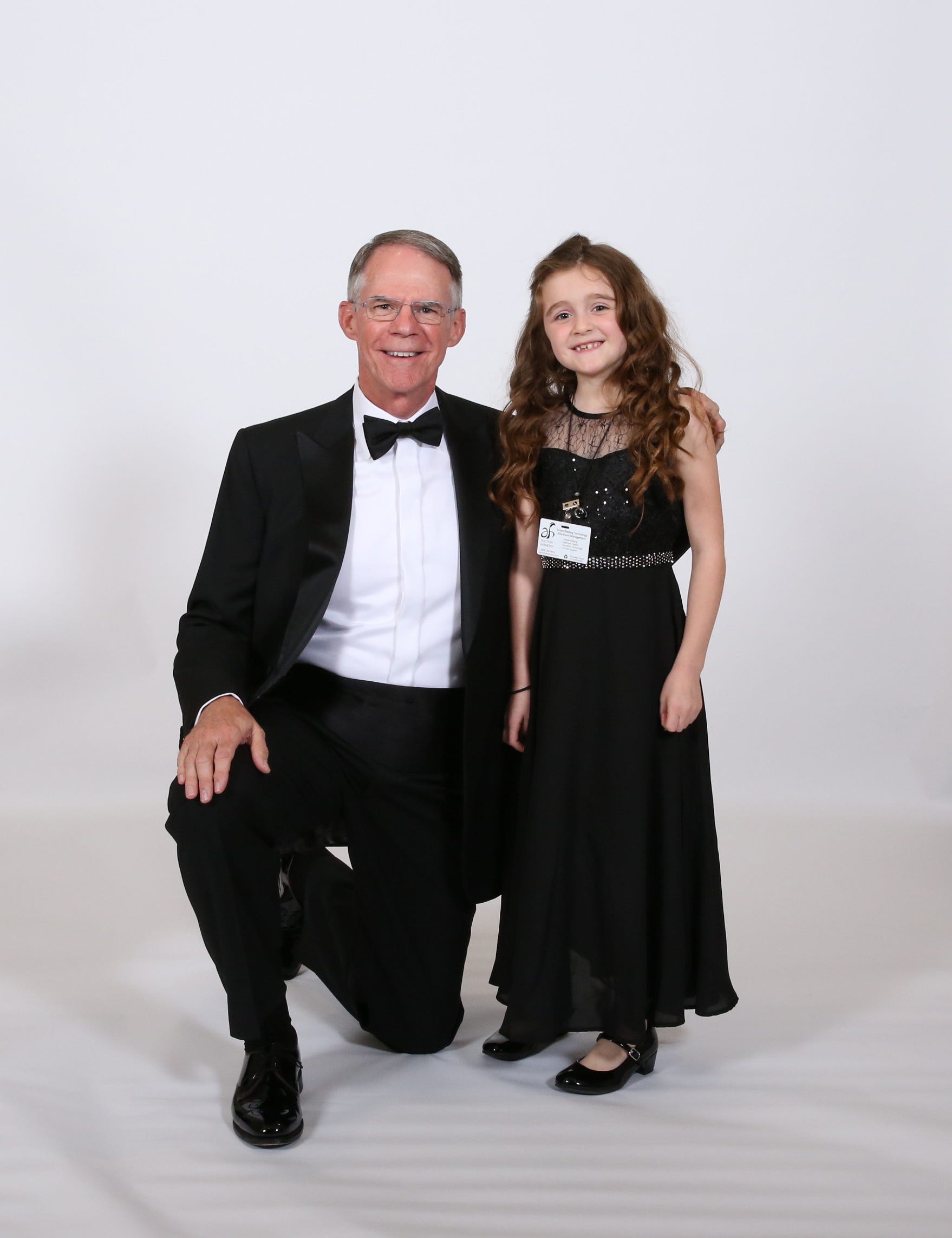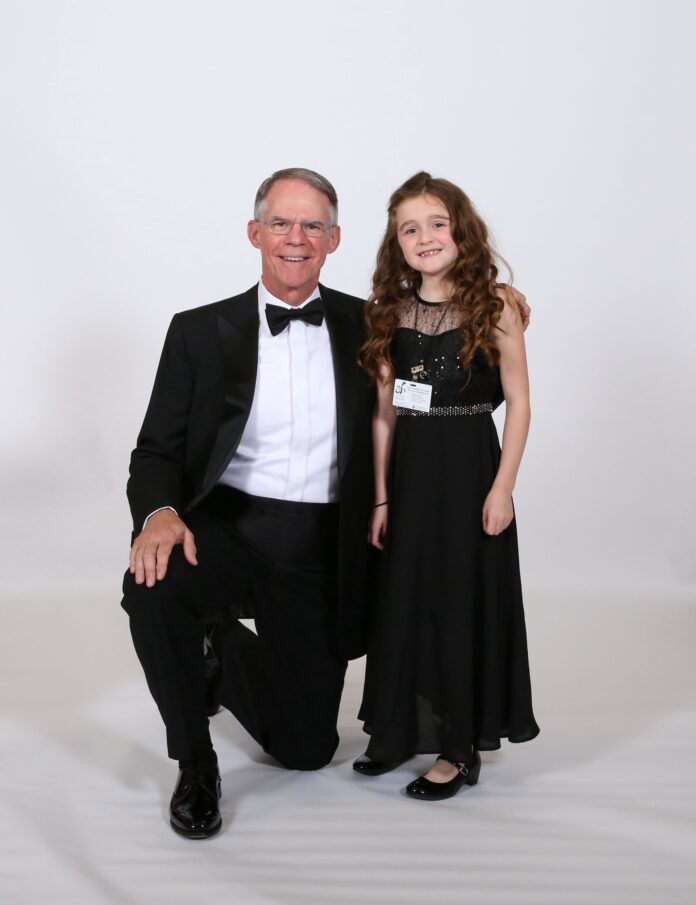Social Impact Heroes: How Richard K. Davis, CEO of Make-A-Wish is helping to change the lives of more than 130,000 critically ill children

While working in banking, I learned that more than 60 percent of people don’t know what they want to do with their money. It’s amazing — so many people have spent the bulk of their lives earning but have not thought about where their money will go. Make-A-Wish has a responsibility to show people the impact they can have through contributing, financially, to our mission. Most people know of Make-A-Wish, meaning we have their share of mind. But in a lot of cases we do not have their share of wallet. If I could create a movement, I would help people know our story, correctly, and ask them for their support — reaching share of wallet, through share of heart.
As part of my series about companies and organizations making an important social impact, I had the pleasure of interviewing Richard K. Davis, leader of one of the most-respected nonprofit organizations in the country — Make-A-Wish® America. Davis joined Make-A-Wish as president and CEO in January 2019, where he leads an organization of 1,200 employees and nearly 40,000 volunteers creating more than 15,600 life-changing wishes for children with critical illnesses each year. Previously, Davis served as the executive chairman and CEO of U.S. Bancorp, a financial services holding company with more than $460 billion in total assets and businesses across the U.S., Canada and Europe. He began his banking career as a teller at age 18 and worked his way through the industry, becoming CEO of U.S. Bancorp in 2006 and chairman of the board in 2007.
Thank you so much for doing this with us Richard! Can you tell us a story about what brought you to this specific career path?
When I moved on from leading U.S. Bancorp in 2017, I didn’t know what I would do next. What I did know was that the right opportunity would come along, and when it did, I’d be ready.
A search firm contacted me with that “opportunity” when I was playing putt-putt with my grandkids. My heart jumped when I learned that opportunity was Make-A-Wish.
Make-A-Wish is in the business of hope — and the impact our mission makes in the lives of not only wish kids and their families, but also donors, volunteers, medical professionals and entire communities is remarkable.
I’ve always wanted to be part of something that changes others’ lives for the better, and I’m very grateful that that “something” led me to Make-A-Wish where we transform lives, one wish at a time.
Can you share the most interesting story that happened to you since you began leading your company?
While meeting colleagues at Make-A-Wish Greater Los Angeles, I asked about the simplest wish they’ve granted and without skipping a beat, the team told me about a 7-year-old boy’s wish to have a bunny.
Upon first learning his wish, the team attempted to push his imagination a bit further, knowing that Make-A-Wish can truly make the impossible possible. After further questioning, the boy decided to make his wish a bit more complex — he wanted a bunny, one that was a boy.
Later in the wish process they learned why. The boy’s critical illness had led him to be wheelchair bound for most of his life, and he’d frequently watch bunnies run around outside his bedroom window. In his mind, bunnies were cool because they could run, so he wanted a bunny.
The child’s wish, which included the best bunny they could find, the highest quality cage and an endowment of food for the bunny’s lifetime, cost $476.56. His wish was so pure, so simple.
Can you share a story about the funniest mistake you made when you were first starting? Can you tell us what lesson you learned from that?
It’s funny how much weight every word carries. When I first started, I kept saying Make-A-Wish makes wishes. But we don’t, the children we serve do.
Instead, we grant wishes, made by the imagination of children with critical illnesses, funded by individual and corporate donors and executed by employees and volunteers.

Can you describe how your organization is making a significant social impact?
We’ve known anecdotally about the power of a wish, but it wasn’t until recently that medical research confirmed children who have wishes granted build the physical and emotional strength needed to fight a critical illness.
Through Make-A-Wish, more than 315,000 children in the U.S. and its territories have experienced a transformative wish, allowing them to replace fear with confidence, sadness with joy and anxiety with hope.
Wow! Can you tell me a story about a particular individual who was impacted this cause?
Yes — let me tell you about Chris Greicius, a 7-year-old who became a police officer in 1980.
Chris, who was battling leukemia, yearned for the chance to catch bad guys, as he put it. His wish — which came true thanks to average people doing incredible things in Phoenix, Arizona — went on to inspire a movement that would transform millions of lives and many more to come. A movement now known as Make-A-Wish.
Today, anyone involved in Make-A-Wish clearly stands on the shoulders of our six founders, all of which played a role in fulfilling Chris’ wish.




Are there three things the community/society/politicians can do help you address the root of the problem you are trying to solve?
Today, for every child who receives a wish, there is another potentially eligible child who does not. We want to grant the wish of every eligible child battling a critical illness, but we must increase our resources to make this vision a reality. People can help us grant more wishes by:
- Donating Money: Right now, more than 23,000 wishes are waiting to be granted. As a nonprofit that seeks no government funding, we rely heavily on individual and corporate donations to make wishes possible. The good news is that donating has never been easier. You can contribute today at wish.org.
- Contributing Time: Across the country, nearly 40,000 volunteers support our mission through everything from raising funds to sending wish families off at the airport. If you are interested in donating your time, you can find contact information for your local chapter by searching your zip code on wish.org.
- Referring Eligible Children: A large percentage of the U.S. population inaccurately believes that if a child is eligible for a wish, then they must have a terminal diagnosis. This isn’t true. In fact, more than 70 percent of wish children live into adulthood. Countless medical professionals are helping us to correct this common misconception and referring children with critical illnesses and their families to the organization. You can refer a child battling a critical illness by completing our referral inquiry form on wish.org.
How do you define “Leadership”? Can you explain what you mean or give an example?
In defining leadership, I think it’s important to explain the difference between leading and managing. Management is doing all of the right things, leadership is doing all of the right things right.
Management is technical, while leadership is emotional. To me, leadership creates followership. A leader needs a follower, and if there is no one to follow you, you cannot be a leader.
What are your “5 things I wish someone told me when I first started” and why. Please share a story or example for each.
- Follow your intuition… always! As a young executive, I would use intuition as a datapoint but follow facts instead. I’ve now learned that your intuition is rarely wrong.
- People only follow you if you’re leading effectively. Focus on the followers, not being the leader.
- Leadership is tough, and it isn’t for everyone. I held 11 different jobs between being a teller and becoming a CEO. In some, I was a manager, in others I’ve been a leader, but in each, I’ve learned something.
- People have different endpoints — presume nothing. It has always bothered me when people ask what you want to do next as if there’s something wrong with wanting to stay where you are. If someone enjoys what they’re doing, I hope they do it for the rest of their life.
- Don’t set any goals, set a direction. If I were to go on a road trip, solely focused on returning home, I wouldn’t look up to see the lakes, mountains and deserts as I passed — and I definitely wouldn’t stop to enjoy them. Alternatively, if I simply set a direction, I’d explore all different terrains and stumble upon a few I didn’t know existed along the way.
You are a person of enormous influence. If you could inspire a movement that would bring the most amount of good to the most amount of people, what would that be? You never know what your idea can trigger. 🙂
While working in banking, I learned that more than 60 percent of people don’t know what they want to do with their money. It’s amazing — so many people have spent the bulk of their lives earning but have not thought about where their money will go.
Make-A-Wish has a responsibility to show people the impact they can have through contributing, financially, to our mission.
Most people know of Make-A-Wish, meaning we have their share of mind. But in a lot of cases we do not have their share of wallet. If I could create a movement, I would help people know our story, correctly, and ask them for their support — reaching share of wallet, through share of heart.

Can you please give us your favorite “Life Lesson Quote”? Can you share how that was relevant to you in your life?
Live life authentically. It’s simple, it’s short — and it’s necessary.
Is there a person in the world, or in the US whom you would love to have a private breakfast or lunch with, and why? He or she might just see this, especially if we tag them. 🙂
I’ve told you about Chris’ wish, which inspired the creation of Make-A-Wish. Equally important is the story of Frank “Bopsy” Salazar, the first official Make-A-Wish kid.
At 7-years-old, Bopsy was battling leukemia, just like Chris, and he wished to visit Disneyland. In 1980, through Bopsy’s wish, Disney joined Make-A-Wish in fulfilling wishes.
If I could share a meal with anyone, I would share a meal with Walt Disney. I’d tell him about how his great work has impacted the lives of more than 130,000 children with critical illnesses around the world, through the Make-A-Wish mission. I’d tell him their stories, show him their photos and attempt to convey the impact what he created has had on these children.
How can our readers follow you on social media?
I’d encourage anyone interested in the life-changing power of a wish come true to follow Make-A-Wish on all of our social media accounts, including Instagram, Twitter, Facebook, YouTube and LinkedIn.
This was very meaningful, thank you so much!


